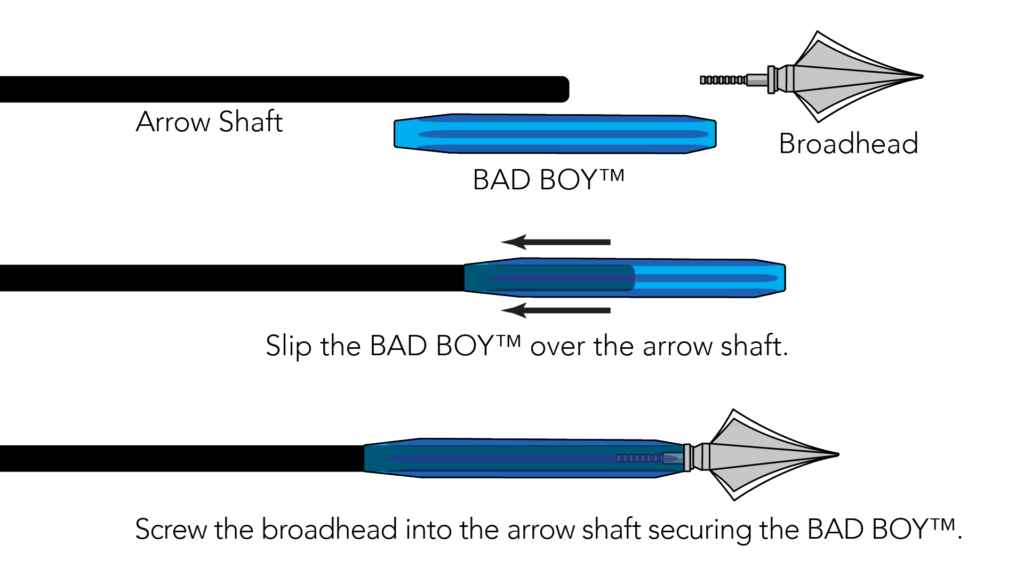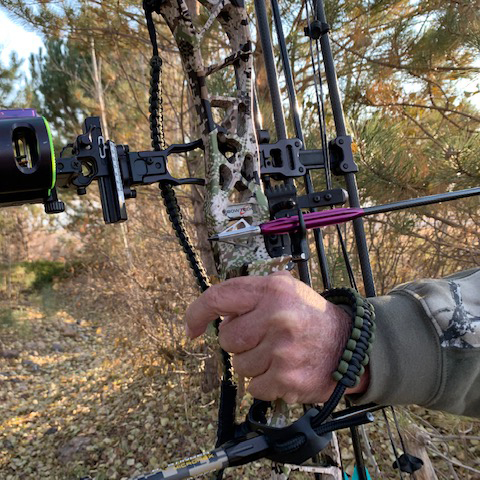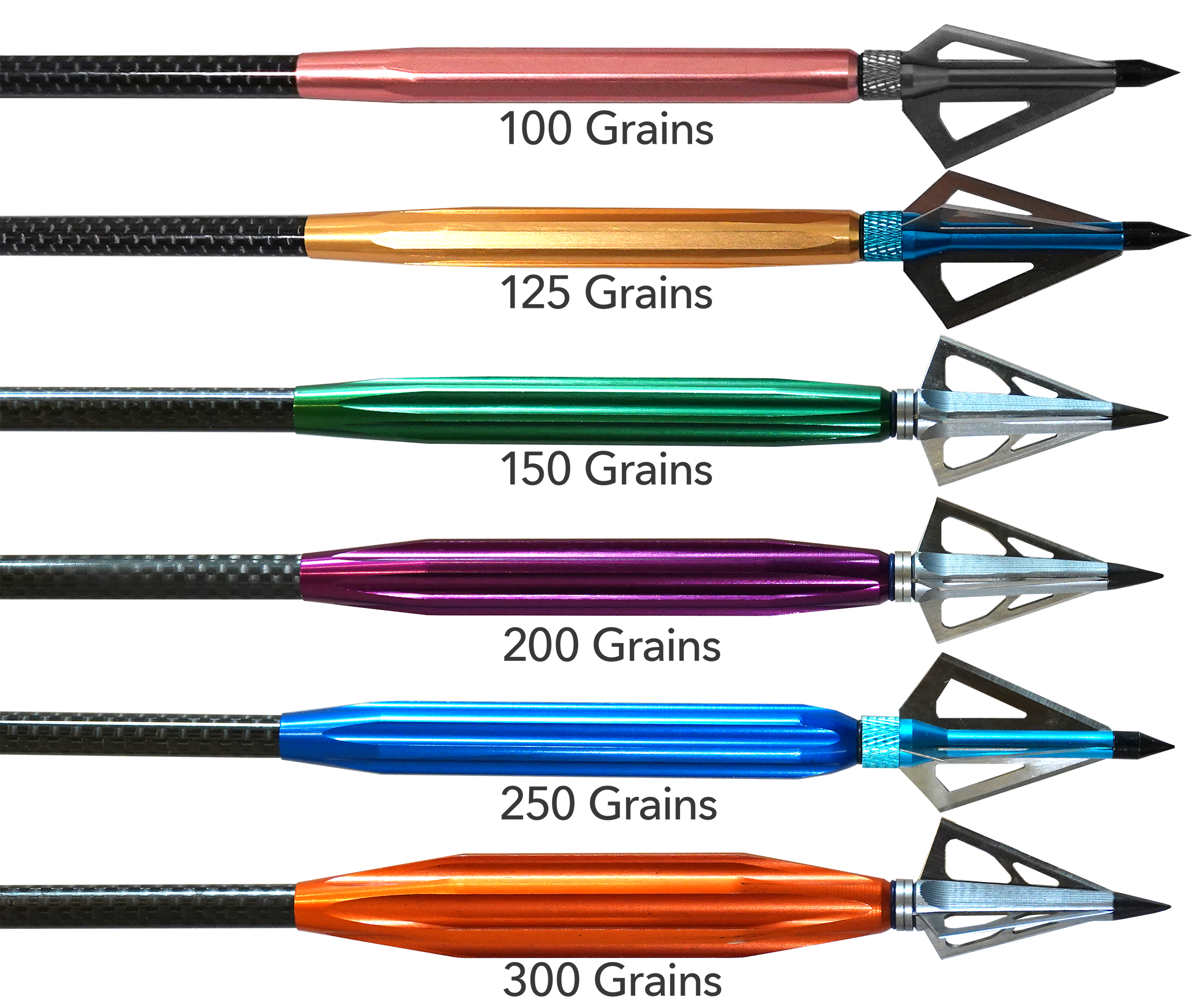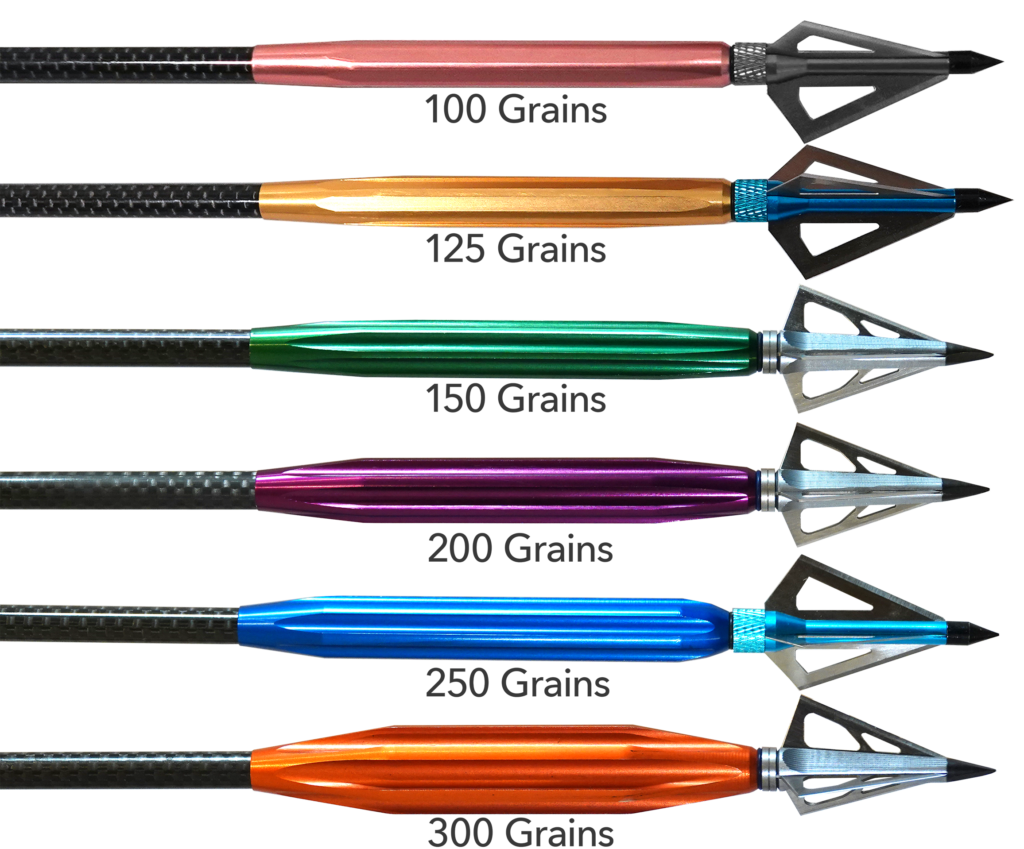BAD BOYS and FOC
What Are the BAD BOYS™
Recently, the archery world has been talking more and more about FOC (front of center) and how important it is. One problem that many people are running into is how difficult it is to make adjustments to arrow FOC. If you are like most archers, you have heard about FOC and have been interested in how it can improve your shot. You will have been interested enough to learn more and even try it out on your own arrows. Unfortunately, you quickly realized that it’s not a very simple process to make those adjustments.
If you are serious about your sport, you have spent years finely tuning your bow and your arrows to shoot consistently. The idea of starting over from scratch so that you can make some FOC adjustments isn’t very appealing. No one wants to re-cut their arrows to add weight inside their arrow shafts. No one wants to add extra weight to their field tips or broad heads. And no one wants to have to re-sight their bow after making all of these changes!
The BAD BOYS™ Are the Solution
The BAD BOYS™ were designed to solve all of these problems. The BAD BOYS™ are a solid piece of machined aircraft aluminum. They range in size from 100 grains to 400 grains. They are easy to install, simply remove your broad head or field point of choice, slide the BAD BOY™ over the shaft, and replace the broad head or field point tightly. They are so easy to install, that you can bring multiple sizes out in the field with you and change them as you need to.

Each BAD BOY™ has been engineered to self-compensate. This is accomplished through the added diameter of each BAD BOY™. As the weights increase, so does the diameter of the BAD BOY™. Because they don’t require you to cut your arrow, they sit nicely on your rest. While they are on your rest, that added diameter will raise the arrow just slightly, compensating for the extra weight. This incredible technology means that you can shoot arrows with and without the BAD BOYS™ and they will be in the same group.

Try them out and see for yourself how simple and effective the BAD BOYS™ are. You won’t want to be without them next season, so get them fast.



